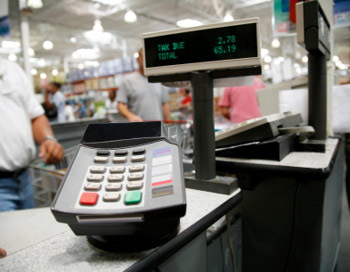 Thanks to the New Business Models for News summit organized by Jeff Jarvis at the CUNY Graduate School of Journalism, I have a spiral notebook full of ideas flagged for followup, which I plan to address on this blog.
Thanks to the New Business Models for News summit organized by Jeff Jarvis at the CUNY Graduate School of Journalism, I have a spiral notebook full of ideas flagged for followup, which I plan to address on this blog.
This morning, a quick one, courtesy of data from Eric Stein of Google.
As we wrestle with the inevitable and undeniably secular disappearance of classified revenue from newspapers and, by extension, their web sites, the obvious question is “How do I replace those dollars?”
The answer for a lot of us has been local – helping local businesses to grow. And, according to Stein, that potential for growth is just beginning.
By federal estimates, there are 23 million small businesses in the U.S. Of that number, 6-7 million have one or more employees; the rest are sole-proprieterships.
And yet, most of them – in fact the vast majority – have yet to create a web site to promote their businesses. We can’t help them drive traffic. Google can’t help them drive traffic. In the digital world, they don’t exist.
So what are local newspapers doing to help? As the largest single sales and marketing organizations in our markets, what can we do to reach out to the millions of going concerns that need to reach the massive and targetable audience we have?
Who’s doing a good job out there of helping local businesses to reach their audiences? Who’s using the pricing advantage of digital media to show local businesses that they can prosper and even grow in a down market?
What are we doing to help local businesses in our markets?


 Steve says
Steve says
October 27, 2008 at 11:27 amThe best example of newspapers helping local businesses int he digital world that I have run across is what LJWorld is doing with their marketplace – http://www2.ljworld.com/marketplace/
 Mykel Nahorniak says
Mykel Nahorniak says
October 27, 2008 at 11:32 amI think the inherent problem with helping local businesses reach their patrons is lack of motivation. If you look at the Web site of a typical local business, it hasn't been updated since 2004. There's no incentive to dedicate consistent time into keeping it updated, because people will stumble across your place no matter what. If times get rough, they blame it on something other than a crappy Web presence.
For businesses to overcome the online hurdle, they need to put some effort into it. There are services out there, but they don't mean anything if businesses aren't going to actively use them.
Not to toot my own horn, but we put a lot of time into a solution for this on Localist.com. We wanted a way for businesses and patrons to communicate with each other without it being intrusive. The best way to do that seemed to be to treat businesses just like any other user. Patrons can send them messages like everyone else. This way, the business doesn't need to dedicate a ton of time to keeping their online presence updated, but they can have a finger on the pulse of their customers.
Here's an example business profile: http://www.localist.com/baltimore/8×10
Compare it to a typical user profile: http://www.localist.com/myke
 digidave says
digidave says
October 27, 2008 at 7:17 pmIt was great getting to meet you Tim.
I'd love to do a follow-up interview with you – or have you write a guest post at NewsInnovation.com
Don't hesitate to contact me if you are interested.
Best
David
 Greg says
Greg says
October 28, 2008 at 8:21 amI've been thinking about this problem recently and have spoken to a few local business owners about this. I think part of the problem is that the existing solutions really do work well enough: word-of-mouth is still how I'm going to pick my next plumber or roofer or contractor. My wife is going to clip coupons from the weekly/monthly circular that shows up in the mailbox. Local retailers focus on selling locally, and in-person; converting a web ad/lead into a local, in-store sale is hard. I agree that more could be done, I think it's a matter of finding a system that balances the capacity these businesses have for growth and their budgets.
 Greg says
Greg says
October 28, 2008 at 9:21 amI've been thinking about this problem recently and have spoken to a few local business owners about this. I think part of the problem is that the existing solutions really do work well enough: word-of-mouth is still how I'm going to pick my next plumber or roofer or contractor. My wife is going to clip coupons from the weekly/monthly circular that shows up in the mailbox. Local retailers focus on selling locally, and in-person; converting a web ad/lead into a local, in-store sale is hard. I agree that more could be done, I think it's a matter of finding a system that balances the capacity these businesses have for growth and their budgets.
 Greg says
Greg says
October 28, 2008 at 2:21 pmI've been thinking about this problem recently and have spoken to a few local business owners about this. I think part of the problem is that the existing solutions really do work well enough: word-of-mouth is still how I'm going to pick my next plumber or roofer or contractor. My wife is going to clip coupons from the weekly/monthly circular that shows up in the mailbox. Local retailers focus on selling locally, and in-person; converting a web ad/lead into a local, in-store sale is hard. I agree that more could be done, I think it's a matter of finding a system that balances the capacity these businesses have for growth and their budgets.